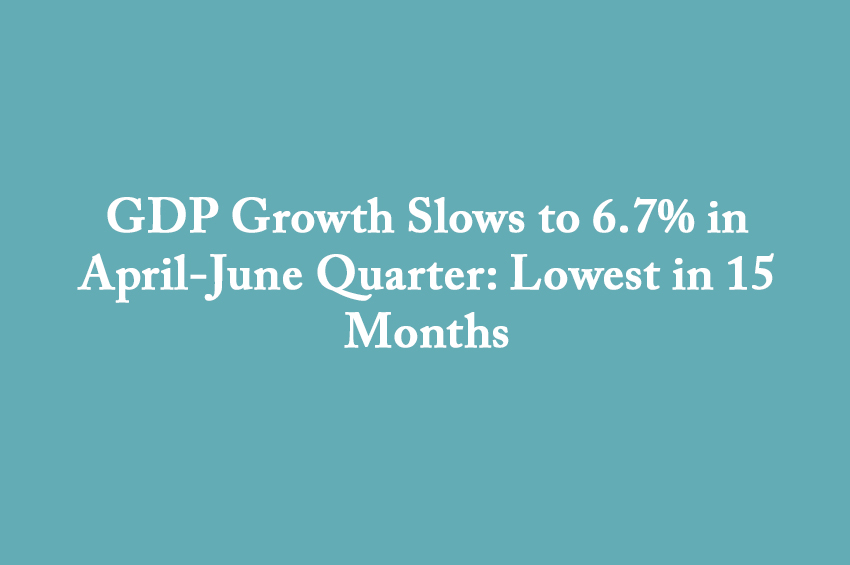Winning Bizness Desk
Mumbai. India's Gross Domestic Product (GDP) growth rate for the first quarter of the financial year 2025 (April-June) has dropped to 6.7%, marking the lowest level in the last five quarters. The figure is a significant decline from the 8.2% growth witnessed during the same period last year (Q1 FY24). This decline has been largely attributed to the poor performance of the agriculture and service sectors. The government released these figures on Friday, August 30, 2024, highlighting the economic challenges currently faced by the country. The slowdown in GDP growth comes after a relatively strong performance in the previous quarter (January-March 2024), where the economy grew by 7.8%. For the entirety of FY 2024, GDP growth stood at 8.2%, a figure that was 1.2% higher than the Reserve Bank of India's (RBI) estimate of 7%. In contrast, the GDP growth for FY 2023 was 7%.
GDP growth rate is a crucial indicator
The Gross Value Added (GVA) for the first quarter of FY 2025 also reflected the economic downturn, standing at 6.8%, down from 8.3% in the corresponding quarter of the previous year (Q1 FY24). GVA for the fourth quarter of FY 2024 was 6.3%, while the overall GVA growth for FY 2024 was recorded at 7.2%. In FY 2023, GVA growth was 6.7%. Notably, The GDP growth rate is a crucial indicator of the country's economic health, measuring the total value of goods and services produced within a specific period. It encompasses the output of both domestic and foreign companies operating within the country's borders. GDP figures are divided into two categories: real GDP and nominal GDP. Real GDP calculates the value of goods and services based on stable prices from a base year (currently 2011-12), whereas nominal GDP is based on current prices.
GVA provides insight into the total output and income
Gross Value Added (GVA) provides insight into the total output and income generated by the economy, excluding input costs and raw material prices. It reflects the actual production value within various sectors and industries. From a national accounting perspective, GVA is derived by subtracting subsidies and taxes from GDP at the macro level, providing a more nuanced view of economic performance. The decline in GDP growth highlights the need for focused economic policies to address the challenges in critical sectors and boost overall economic stability in the coming quarters.


